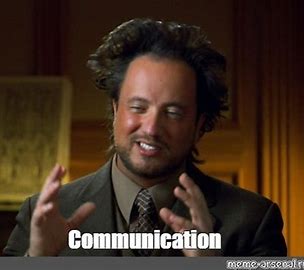
The Tool Sales Really Needs (and it is not what you think)

Oh, the wonderful world of tech—where innovation is alive, you can finally wear your beloved t-shirt to work without being judged, and you can playbook just about anything. Sounds like the dream, right? That is exactly what I thought when I made the transition from a manufacturing-adjacent sales leader role to create the dream—but it was not exactly how I envisioned it.
You see, I came from the world of “get yourself at the table by creating a strong use case and having a clear foundation, first.” In the world of luxury furniture, word travels fast—and nobody wants to do business with an opportunist who still calls a sofa a couch (and if you do, I promise—your secret is safe with me). During tech interviews, there were so many things thrown around that I felt like I was missing this secret sauce to becoming a millionaire—but was I?
Fast forward to the fast-moving world of tech, I was given a fancy complex product, a list of buzzwords, and you guessed it—automation tools—to make me successful. I am not going to lie, I felt like a failure more than a winner selling to one of the most complex buyers in the Universe—the CISO. “But I use this word in context! My tool told me!”
But what happened when I decided to ditch the fancy tools to truly just sit with my buyer and ask a million questions (like, “How do you expand a brick-and-mortar to six markets?”)? If you said that my sit-to-show ratio increased and the quality of my deals and conversations did as well—ding ding ding, you just closed won yourself an opportunity before Christmas. Hope that at least gets you to 40%.
But this blog is not to advocate for tech; it is to advocate for the most basic component in sales (and business): strong communication.
GASP—am I saying that you should take the time to teach your reps how to communicate and understand like an executive (even if it is minor) versus giving them a list + Gong recordings?
Sorry, 98% of sales leaders out there, but yes. I am saying that communication skills are the core foundation that you are refusing to build on your sales team. And maybe because you don’t have that foundation yourself—sorry if that stung a bit.
And nothing against Gong, but if you need to analyze data to understand if you are actually listening to the other end of a conversation—put yourself in a corner. You are in sales timeout.
One thing that I think sales is missing right now is that we are expecting reps to understand their buyer’s problems, yet we do not let them participate in social learning activities, or even give them the space to ask the buyer contextual questions to further understand what they need.
Rubbed elbows with an exec at a conference? Adds to lead list
No is seen as an objection, and we focus so much on moving to the next step that we forget to pause and think to ourselves, “Maybe this doesn’t align with their strategic initiatives—I should ask.” I am also not throwing rocks from a glass house—because I have made those mistakes.
And don’t even get me started about trend chasing in sales. Send the video!!! Message a leader doing a handstand in their emails!
CUTE. But what if I told you that an executive can give you attention—but retaining their attention over time is a different ballgame?
And what does it boil down to? How well you understand their business and how you communicate with them.
So hey, if you are looking for ways to sharpen your sales team’s business acumen and communication skills—I have some ideas 😉
- Send your reps to conferences where keynotes are centered around the problem that you solve. Instead of shipping them off to pitch everyone to death, have them take notes about what they learned about the problem. Bonus points if you have them map it back to your problems and map out frameworks of good questions they can ask to get a better understanding when prospecting.
- Teach your reps how to write business use cases based on data they have collected to make their assumptions prompt a conversation—not rejection. I love using Fluint | Write GTM content your buyers actually read as a guide because we are only as good as we present ourselves. Executives do not want to see a laundry list of buzzwords in a business case (sorry deck lovers)—they want brevity and context on how your product can take their business to the next step.
- Teach your reps about operational adjacent opportunities—and what that means. One thing that I love diving into with sales teams is how to find look-alike opportunities by looking at gaps in public reports (or just business alikeness). Want to stack your pipeline with a clear understanding and value prop without (eh, 90%) of the guesswork? Start there. And if you are ever struggling to identify these as an IC—holler at your girl. My sessions are not free—but I love helping in this area.
- Challenge your reps to break down common buzzwords by using common business language found in said posted reports (or any feature for that matter). Stop saying “optimize,” “streamline,” and “game-changing.” Nobody talks like that. And if you know someone who does—ask them what their dating life is like.
It’s wild out there—and honestly, I am tired of people treating an executive’s time like a strategy. Stop chasing trends and learn how to communicate—end of story.

































